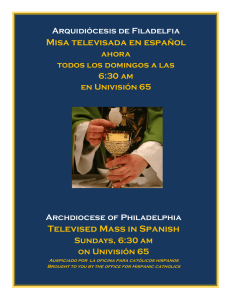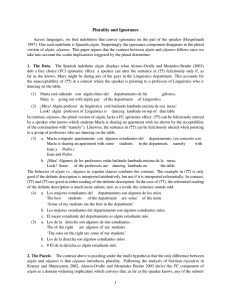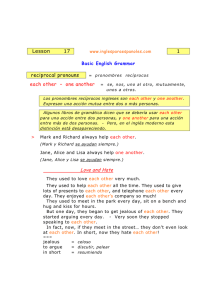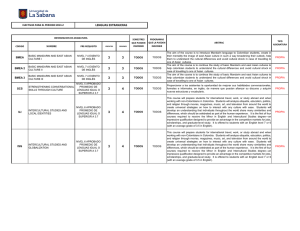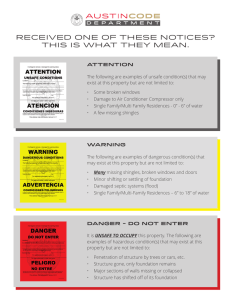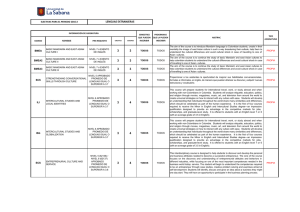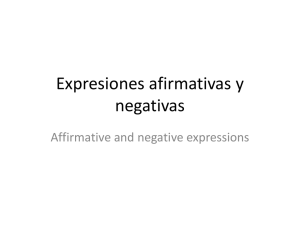How Spanish-English bilingual children approach entailment
Anuncio
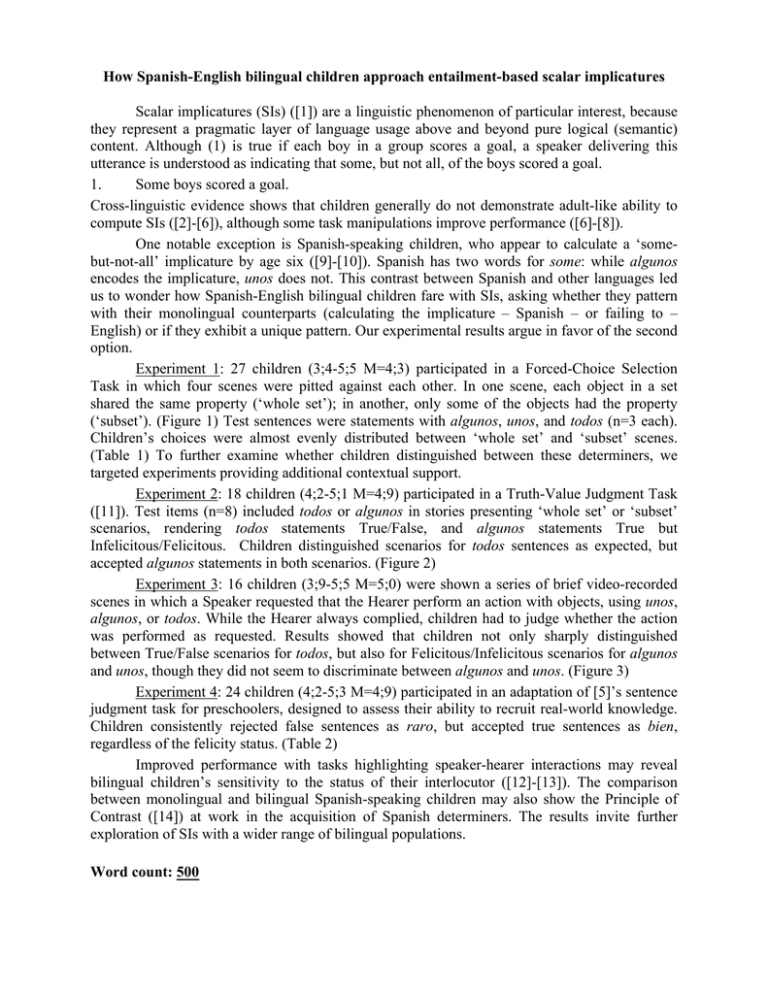
How Spanish-English bilingual children approach entailment-based scalar implicatures Scalar implicatures (SIs) ([1]) are a linguistic phenomenon of particular interest, because they represent a pragmatic layer of language usage above and beyond pure logical (semantic) content. Although (1) is true if each boy in a group scores a goal, a speaker delivering this utterance is understood as indicating that some, but not all, of the boys scored a goal. 1. Some boys scored a goal. Cross-linguistic evidence shows that children generally do not demonstrate adult-like ability to compute SIs ([2]-[6]), although some task manipulations improve performance ([6]-[8]). One notable exception is Spanish-speaking children, who appear to calculate a ‘somebut-not-all’ implicature by age six ([9]-[10]). Spanish has two words for some: while algunos encodes the implicature, unos does not. This contrast between Spanish and other languages led us to wonder how Spanish-English bilingual children fare with SIs, asking whether they pattern with their monolingual counterparts (calculating the implicature – Spanish – or failing to – English) or if they exhibit a unique pattern. Our experimental results argue in favor of the second option. Experiment 1: 27 children (3;4-5;5 M=4;3) participated in a Forced-Choice Selection Task in which four scenes were pitted against each other. In one scene, each object in a set shared the same property (‘whole set’); in another, only some of the objects had the property (‘subset’). (Figure 1) Test sentences were statements with algunos, unos, and todos (n=3 each). Children’s choices were almost evenly distributed between ‘whole set’ and ‘subset’ scenes. (Table 1) To further examine whether children distinguished between these determiners, we targeted experiments providing additional contextual support. Experiment 2: 18 children (4;2-5;1 M=4;9) participated in a Truth-Value Judgment Task ([11]). Test items (n=8) included todos or algunos in stories presenting ‘whole set’ or ‘subset’ scenarios, rendering todos statements True/False, and algunos statements True but Infelicitous/Felicitous. Children distinguished scenarios for todos sentences as expected, but accepted algunos statements in both scenarios. (Figure 2) Experiment 3: 16 children (3;9-5;5 M=5;0) were shown a series of brief video-recorded scenes in which a Speaker requested that the Hearer perform an action with objects, using unos, algunos, or todos. While the Hearer always complied, children had to judge whether the action was performed as requested. Results showed that children not only sharply distinguished between True/False scenarios for todos, but also for Felicitous/Infelicitous scenarios for algunos and unos, though they did not seem to discriminate between algunos and unos. (Figure 3) Experiment 4: 24 children (4;2-5;3 M=4;9) participated in an adaptation of [5]’s sentence judgment task for preschoolers, designed to assess their ability to recruit real-world knowledge. Children consistently rejected false sentences as raro, but accepted true sentences as bien, regardless of the felicity status. (Table 2) Improved performance with tasks highlighting speaker-hearer interactions may reveal bilingual children’s sensitivity to the status of their interlocutor ([12]-[13]). The comparison between monolingual and bilingual Spanish-speaking children may also show the Principle of Contrast ([14]) at work in the acquisition of Spanish determiners. The results invite further exploration of SIs with a wider range of bilingual populations. Word count: 500 Figures and Tables Figure 1: Experiment 1 (forced-choice task) “Muéstrame dónde todos los /algunos/unos perros tienen galletas.” Show me where all/some of the dogs have cookies. Table 1: Experiment 1 (Forced-Choice task) whole set determiner algunos unos todos subset % selection subset whole set 37.0% 58.0% 43.2% 54.3% 51.9% 43.2% Figure 2: Experiment 2 (TVJT) Figure 3: Experiment 3 (Video task) “Creo que todos los/algunos niños marcaron goles” I think that all/some of the boys got a goal. “Pon todos los/algunos/unos libros en la mesa.” Please put all/some of the books on the table. 100.0% Truth Value Judgment Task 80.0% 80.0% % acceptance % yes Video Task 100.0% 60.0% 40.0% 20.0% 60.0% 40.0% 20.0% 0.0% 0.0% algunos subset algunos todos whole set unos todos control Infelicitous (algunos, unos) / False (todos) True Table 2: Experiment 4 (Sentence Judgment task) n=2 each algunos % bien unos % bien todos % bien False and ‘Bizarre’ Algunos caballos cantan. Some horses sing 23.3% Unos pájaros bailan. Some birds dance 13.3% Felicitous (algunos, unos) / True (todos) Algunos gatos son negros. Some cats are black 56.6% Unas flores son amarillas. Some flowers are yellow 45.0% Infelicitous / False (todos) Algunos perros tienen ojos. Some dogs have eyes 61.6% Unas casas tienen puertas. Some houses have doors 65.0% Todas las llaves comen chocolate. All keys eat chocolate 10.0% Todas las mariposas tienen alas. All butterflies have wings 56.6% Todas las vacas son café. All cows are brown 38.3% References [1] Grice, 1975; [2] Guasti et al., 2005; [3] Huang & Snedeker, 2009; [4] Hurewitz et al, 2006; [5] Noveck, 2001; [6] Papafragou & Musolino, 2003; [7] Foppolo et al., 2012; [8] Miller et al., 2004; [9] Schmitt & Miller, 2004; [10] Vargas-Tokuda et al., 2008; [11] Crain & McKee, 1985; [12] Lanza, 1992; [13] Valdés, 2003; [14] Clark, 1987
